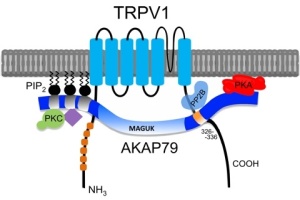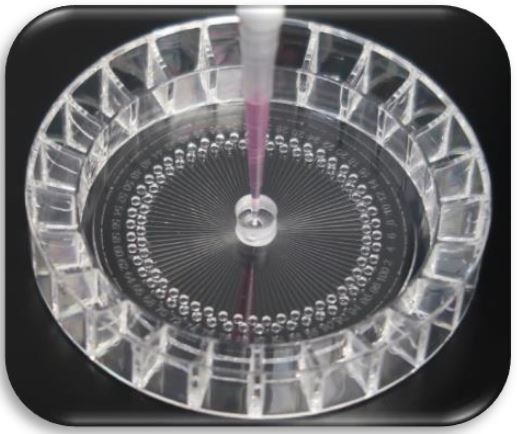The Transient Receptor Potential (TRP) ion channel family participates in numerous functions of the Nervous System. A recent publication tends to indicate that TRP might also be of interest for therapeutical strategies for controlling pro-inflammatory CD4+ T cell reactions.
Among the TRP channels, TRPV1 is normally associated with its role in pain sensing in neurons. This “sensory receptor”, actually a ligand-gated calcium channel, normally responds to heat and the chili pepper compound Capsaicin. In 2011, Moran et al. had already identified TRPV1 antagonists as analgesic agents. (1)
Recently, Bertin et al. have suggested a new possible role of TRPV1 in CD4+ pro-inflammatory T cell regulation. (2) For this, the authors have developed a smart mouse model of colitis. Within this model, SB366791, a TRPV1 blocker, reduced colonic inflammation. This work leads to the conclusion that TRPV1 is a possible autoimmune disease drug discovery target, an option that has already been explored for pain with little success.
Sources:
- Moran M.M. et al. “Transient receptor potential channels as therapeutic targets” (2011) Nature Reviews Drug Discovery 10, 601-620. DOI:10.1038/nrd3456
- Bertin S. et al. “The ion channel TRPV1 regulates the activation and proinflammatory properties of CD4+ T cells” (2014) Nature Immunology 15, 1055–1063. DOI:10.1038/ni.3009
Where to find TRP-related active small molecules?
Focus Biomolecules offers ultra-pure high quality bioactive small molecules. Below, you will find my selection of the most popular TRPPV1-related bioactive compounds:
TRPV1 agonist:
A vanilloid agonist known to activate the transient receptor potential channel vanilloid subfamily member 1 (TRPV1) and to possess analgesic and anti-inflammatory effects.
A quinolone alkaloid isolated from a very popular herb used in traditional chinese medicine (Evodia rutaecarpa). It has been shown to modulate cellular apoptosis, cancer cell proliferation while promoting cell cycle arrest in G2/M. It also functions as an agonist of TRPV1 and acts as an anti-inflammatory agent.
A structural analog of capsaicin found in the Capsicum genus. This amide of vanillylamine and oleic acid is as an agonist at the vanilloid receptor, VR1, inducing desensitization analgesia in rat and mouse models of pain.
An analog of capsaicin that is an agonist at vanilloid receptors which acts as a selective modulator of primary afferent neurons.
TRPV1 antagonist
A potent (IC50 = 0.7 µM) and selective TRPV1 antagonist.
A cell permeable antagonist displaying analgesic activity in rat models of neuropathic pain.
What about you?
Which TRPV1 ligands are you using in the endocannabinoid family? Which other TRP channel ligands (TRPA1, TRPC, TRPM8 and TRPML…) are you looking for to perform your in vitro assays?



